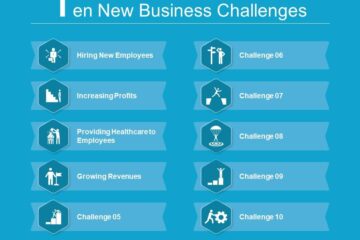U.S. regulators gave a failing grade to five big banks on Wednesday, including JPMorgan Chase & Co (JPM.N) and Wells Fargo & Co (WFC.N), on their plans for a bankruptcy that would not rely on taxpayer money, giving them until Oct. 1 to make amends or risk sanctions.
The move officially starts a long regulatory chain that could end with breaking up the banks. Nearly a decade after the financial crisis, it underscored how the debate about banks being “too big to fail” continues to rage in Washington and exasperate on Wall Street.
The banks failed for reasons ranging from the way liquidity would be housed and shuffled among domestic and foreign subsidiaries to the manner in which executives would communicate problems as they arose during a crisis.
Wednesday’s announcement was the first time the two major banking regulators, the Federal Reserve and the Federal Deposit Insurance Corporation, issued joint determinations flunking banks’ plans, commonly called “living wills.”
If the five, which also included Bank of America Corp (BAC.N), State Street Corp (STT.N) and Bank of New York Mellon Corp. (BK.N), do not correct serious “deficiencies” in their plans by October, they could face stricter regulations, like higher capital requirements or limits on business activities, regulators said.
Accomplishing that task may not be easy: criticized banks have five months to reassess and rewrite wide swaths of their resolution plans to regulators’ satisfaction. At the same time, compliance departments will also be focused on regulatory stress tests, whose results will be released before October.
If the deficiencies persist for two years, then the banks will have to divest their assets. They have until July 2017 to address more minor “shortcomings.”
The regulators’ report coincided with the start of banks’ earnings reporting period and bank shares rallied. Shares of JP Morgan, Citigroup and Bank of America all closed up more than 3 percent and Wells Fargo shares were up 2.87 percent.
The requirement for a living will was part of the Dodd-Frank Wall Street reform legislation passed in the wake of the 2007-2009 financial crisis, when the U.S. government spent billions of dollars on bailouts to keep big banks from failing and wrecking the U.S. economy.
The plans are separate from the Fed’s stress tests, where banks demonstrate stability by showing how they would withstand economic shocks in hypothetical scenarios.
“The FDIC and Federal Reserve are committed to carrying out the statutory mandate that systemically important financial institutions demonstrate a clear path to an orderly failure under bankruptcy at no cost to taxpayers,” FDIC Chairman Martin Gruenberg said in a statement. “Today’s action is a significant step toward achieving that goal.”
But the agency’s vice chairman, Thomas Hoenig, who was a voting member of the Federal Open Market Committee during the crisis, said the plans show that no firm is “capable of being resolved in an orderly fashion through bankruptcy.”
“The goal to end ‘too big to fail’ and protect the American taxpayer by ending bailouts remains just that: only a goal,” he said.
The three remaining large, systemically important banks, which the U.S. government considers “too big to fail,” did not fare much better in their evaluations, but sidestepped potential sanctions because they were not given joint determinations.
The regulators continue to assess plans for four foreign banks labeled “systemically important” – Barclays PLC (BARC.L), Credit Suisse Group (CSGN.S), Deutsche Bank AG DBKGN.DE, and UBS Group AG (UBSG.S).
The FDIC alone determined the plan submitted by Goldman Sachs (GS.N) was not credible, while the Federal Reserve Board on its own found Morgan Stanley’s plan not credible. Citigroup’s (C.N) living will did pass, but regulators noted it had “shortcomings.”
Goldman Sachs said in a statement it has made “significant progress” and Morgan Stanley said resolution planning is one of its “highest priorities.”
Citigroup will work to address the shortcomings, Chief Executive Michael Corbat said in a statement.
‘KEY VULNERABILITIES’
The deficiencies across the five banks largely revolved around liquidity, governance and operations.
While JPMorgan (JPM.N) has “made notable progress in a range of areas,” the regulators said it “has key vulnerabilities,” including an inability to estimate the liquidity needed and available for funding bankruptcy resolution and insufficient resources for winding down derivatives.
On a conference call on JPMorgan’s earnings, bank executives expressed disappointment with the determination and Chief Executive Officer Jamie Dimon said the bank has “tons of liquidity.”
“It’s more about reporting, legal entities and things like that,” he said. “And if other firms can satisfy that I’d be surprised if we can’t.”
The agencies said Wells Fargo’s (WFC.N) living will “exhibited a lack of governance and certain operational capabilities.”
By October it must demonstrate a “robust process to ensure quality control and accuracy” in its plan and lay out legally how different lines of business can be restructured and its regional units can be separated.
Wells, State Street and Bank of New York all said in statements they will work to address the deficiencies by the October 1 deadline. Bank of America did not comment.
The determinations raised debate about how living wills can help banks survive a financial catastrophe.
Proponents of stronger financial regulation welcomed them, with Senator Sherrod Brown of Ohio, the most powerful Democrat on the Senate Banking Committee, saying they were “an important step in the effort to protect Americans from being on the hook for the failures of ‘too big to fail’ banks in the future.”
Democratic presidential candidate Hillary Clinton said regulators need to break big banks apart if they don’t fix their living will problems over time. Her rival, Bernie Sanders, pointed out on Twitter that many big banks have only gotten bigger since they were bailed out during the financial crisis.
The U.S. Chamber of Commerce, though, said the process “is broken.”
“Contradictory outcomes through different tools such as stress tests and living wills harm the ability of regulators to achieve financial stability and for market participants to understand what regulators are doing,” said David Hirschmann, head of the business group’s capital markets center.
(Reporting by Lisa Lambert; Additional reporting by David Henry, Olivia Oran, Dan Freed and Lauren LaCapra in New York; Editing by Chizu Nomiyama and Nick Zieminski)



